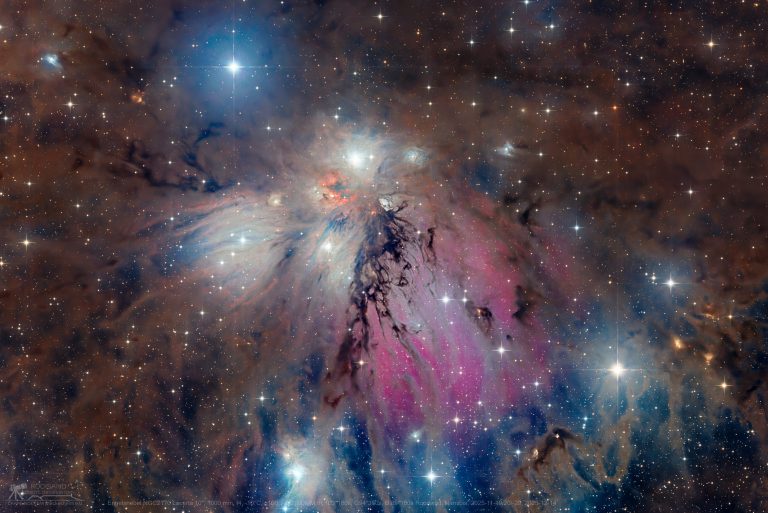-
Angel Nebula NGC 2170
My colorful photo shows the Angel Nebula in the constellation Monoceros. A nebula complex that combines a mixture of the most beautiful types of nebulae. Bluish nebulae that reflect the light of nearby hot stars. Hydrogen clouds that are excited
-
Dolphin Head Nebula – SH2 308
The sky is full of beautiful phenomena, which are impressively displayed here with the Dolphin Head Nebula. This colossal gas bubble is the result of a catastrophic stellar wind emitted from one of the rarest and most unstable types of
-
LBN 878 and Barnard 35 in Orion
This beautiful combination of the dark cloud Barnard 35 and the brown and reddish glowing emission nebula LBN 878 framing it can be seen in the constellation Orion. Like other dark nebulae, Barnard 35 consists of interstellar gas and dust
-
Veil Nebula in Cygnus – NGC 6995, NGC 6920
This cirrus cloud-like nebula is the last visible remnant of a star that exploded in the Milky Way about 8,000 years ago. For people living at that time the expanding cloud was as bright as a crescent moon and visible
-
IC1613 – Dwarf Galaxy in Cetus
After upgrading our telescope in Namibia, we took an image of the fascinating dwarf galaxy IC1613 which was visible in the sky all night long. Located 2.3 million light-years away, it contains around 100 million stars and has an irregular
-
Carpe Noctem Remote, Rooisand Namibia | Dark Clouds | Rooisand Namibia | Super Nova Remnant | Uncategorized
NGC6603 and the small Sagittarius Star Cloud M24
The center of our Milky Way is almost completely obscured from our view by interstellar dust and is therefore virtually invisible. But there is a small, tunnel-like window that allows us to see a particularly star-rich part of the Milky






